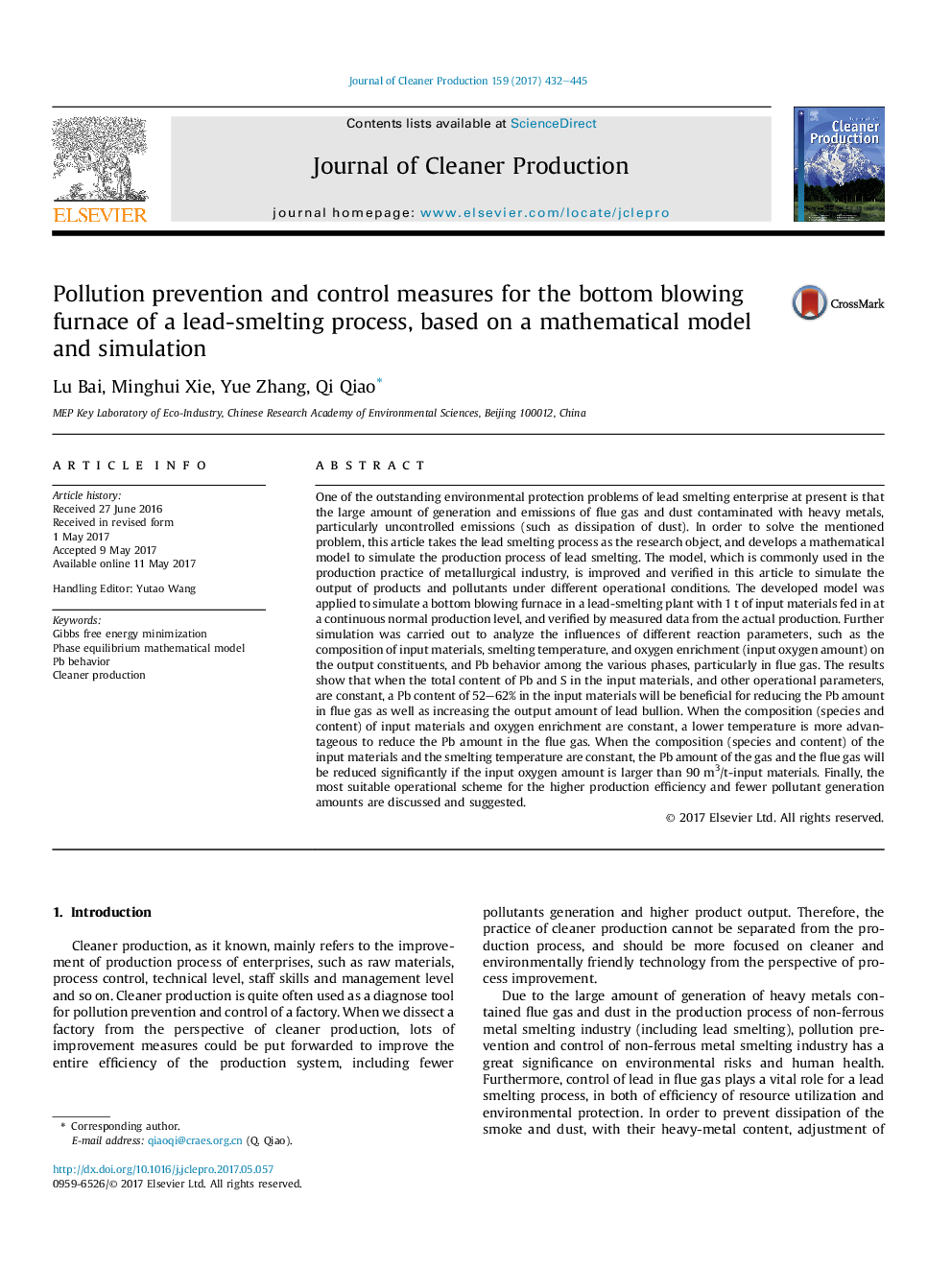| کد مقاله | کد نشریه | سال انتشار | مقاله انگلیسی | نسخه تمام متن |
|---|---|---|---|---|
| 5480953 | 1522095 | 2017 | 14 صفحه PDF | دانلود رایگان |
عنوان انگلیسی مقاله ISI
Pollution prevention and control measures for the bottom blowing furnace of a lead-smelting process, based on a mathematical model and simulation
ترجمه فارسی عنوان
اقدامات پیشگیرانه و کنترل آلودگی برای کوره پایین آمدن یک فرآیند ذوب ریخته گری، بر اساس یک مدل ریاضی و شبیه سازی
دانلود مقاله + سفارش ترجمه
دانلود مقاله ISI انگلیسی
رایگان برای ایرانیان
کلمات کلیدی
موضوعات مرتبط
مهندسی و علوم پایه
مهندسی انرژی
انرژی های تجدید پذیر، توسعه پایدار و محیط زیست
چکیده انگلیسی
One of the outstanding environmental protection problems of lead smelting enterprise at present is that the large amount of generation and emissions of flue gas and dust contaminated with heavy metals, particularly uncontrolled emissions (such as dissipation of dust). In order to solve the mentioned problem, this article takes the lead smelting process as the research object, and develops a mathematical model to simulate the production process of lead smelting. The model, which is commonly used in the production practice of metallurgical industry, is improved and verified in this article to simulate the output of products and pollutants under different operational conditions. The developed model was applied to simulate a bottom blowing furnace in a lead-smelting plant with 1Â t of input materials fed in at a continuous normal production level, and verified by measured data from the actual production. Further simulation was carried out to analyze the influences of different reaction parameters, such as the composition of input materials, smelting temperature, and oxygen enrichment (input oxygen amount) on the output constituents, and Pb behavior among the various phases, particularly in flue gas. The results show that when the total content of Pb and S in the input materials, and other operational parameters, are constant, a Pb content of 52-62% in the input materials will be beneficial for reducing the Pb amount in flue gas as well as increasing the output amount of lead bullion. When the composition (species and content) of input materials and oxygen enrichment are constant, a lower temperature is more advantageous to reduce the Pb amount in the flue gas. When the composition (species and content) of the input materials and the smelting temperature are constant, the Pb amount of the gas and the flue gas will be reduced significantly if the input oxygen amount is larger than 90Â m3/t-input materials. Finally, the most suitable operational scheme for the higher production efficiency and fewer pollutant generation amounts are discussed and suggested.
ناشر
Database: Elsevier - ScienceDirect (ساینس دایرکت)
Journal: Journal of Cleaner Production - Volume 159, 15 August 2017, Pages 432-445
Journal: Journal of Cleaner Production - Volume 159, 15 August 2017, Pages 432-445
نویسندگان
Lu Bai, Minghui Xie, Yue Zhang, Qi Qiao,
